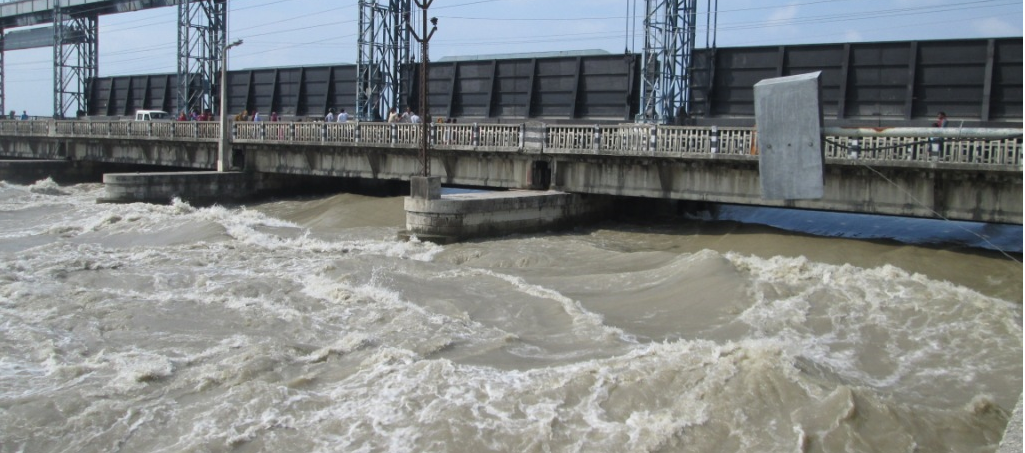67 years on, Koshi victims yet to be compensated

By Devram Prasad Yadav, Saptari, Jan. 20: More than 67 years since the Koshi Agreement was signed between the governments of Nepal and India, thousands of victims of the ensuing project are still awaiting compensation.
Several residents of Saptari, Sunsari and Udaypur districts, who were displaced due to the construction of the barrage and embankments along the Koshi River to control flood, have been deprived of compensations previously promised. With both Indian and the Nepali governments remaining insensitive to their plights, the victims have been compelled to constantly seek indemnification for their lands lost and houses sacrificed to the project for decades.
The Koshi Agreement was signed between Nepal and India in 1954 by Mahabir Shumsher Rana, the then Nepal's project development minister, and Gulzarilal Nanda, India's planning minister at that time, in the presence of former King Mahendra Shah and Jawaharlal Nehru, the then Prime Minister of India.
During the construction of Saptakoshi Barrage, residents of Bhardaha, Lilja Kattaiya, Yoginiya, Hanumannagar, Gobargadha, among other villages (then Gaun Panchayats), were displaced.
Victims have been fighting for compensation since 2008. They even formed an organization called Koshi Victim Rescue Society in 2011 to act towards that goal. The Indian government is yet to provide compensation for over 48,000 bighas of land in those districts lost to the project, as per Ghanshyam Jha, secretary of the organisation.
After an extended struggle of the victims, Indian government finally asked the Nepali side to quote the compensation rate in 2012.
Then, in 2015, a joint meeting of the aforementioned districts’ administrations determined the compensation rate -- Rs. 150,000 per bigha -- and handed it to the Indian side.
However, six gruelling years have passed but the victims are yet to see light at the end of the tunnel.
“We gave the allocated rate of compensation, but haven’t heard anything since then,” said Jha.
In the initial stage of the agreement, the Indian side had decided to compensate only for 5,400 bighas of land. Later on, however, due to the pressure of the victims led by the Koshi Victim Rescue Society together with the extended meeting held in Bihar in 2009 it added 2,223 bighas from Saptari district to that list.
According to the victims, there are more lands, which the Indian side needs to take responsibility for.
In addition to compensating the Koshi victims, the agreement stipulates that the Koshi Project should construct schools, hospitals, drinking water, electricity, drainage and other civic amenities in the affected Nepali areas as the mitigation measures.
“The agreement allows India to control flooding in the Koshi River and its tributaries for 199 years, as well as protection of the surrounding settlements on the Indian side. But even decades after the agreement, India has not shown any interest in keeping its promise; nor has the Nepali side been able to play coordinating role in achieving that result,” bemoaned Jha.
Recent News

Do not make expressions casting dout on election: EC
14 Apr, 2022
CM Bhatta says may New Year 2079 BS inspire positive thinking
14 Apr, 2022
Three new cases, 44 recoveries in 24 hours
14 Apr, 2022
689 climbers of 84 teams so far acquire permits for climbing various peaks this spring season
14 Apr, 2022
How the rising cost of living crisis is impacting Nepal
14 Apr, 2022
US military confirms an interstellar meteor collided with Earth
14 Apr, 2022
Valneva Covid vaccine approved for use in UK
14 Apr, 2022
Chair Prachanda highlights need of unity among Maoist, Communist forces
14 Apr, 2022
Ranbir Kapoor and Alia Bhatt: Bollywood toasts star couple on wedding
14 Apr, 2022
President Bhandari confers decorations (Photo Feature)
14 Apr, 2022










